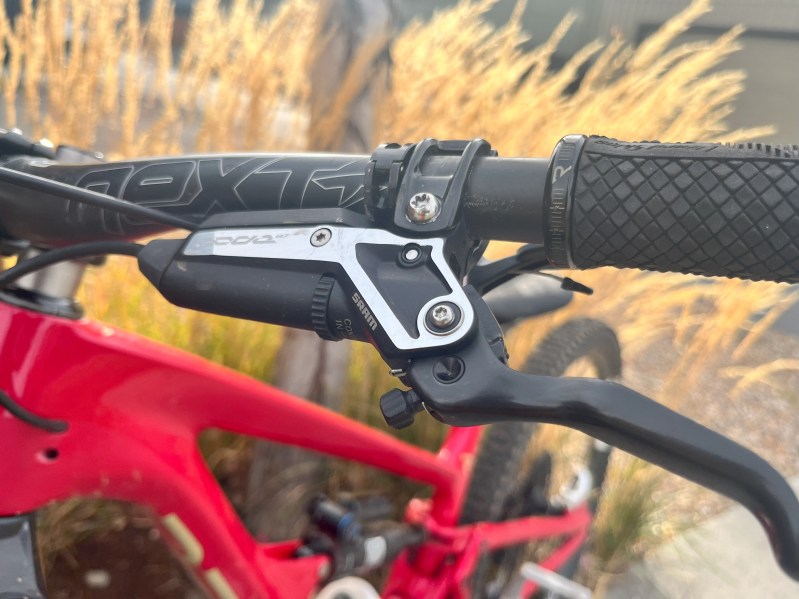
Whether articles or videos, mountain bike media is littered with bike upgrade content. This type of content is helpful for the brand-new rider and folks who have been mountain biking for years.
For folks new to mountain biking, upgrade content can be a great introduction to how their mountain bike performs or is expected to perform. Often, it is this type of content that opens our eyes to the incredible potential of our mountain bikes.
Those who have been mountain biking for years consume the content to see the next greatest product offering and why they should get it for their mountain bike.
The one thing that many of these mountain bike upgrade articles and videos have in common, however, is that they also emphasize trying to save money. Headlines may read, “Upgrade for less,” or, “Save money while upgrading your mountain bike.’
And don’t get me wrong, saving money is great. There can be times when our need to save a buck compromises the upgrade we want to make on our mountain bike. We end up disappointed and wishing we just would have splurged, went for the greatest, and thoroughly enjoyed the upgrade we made to our mountain bike.
So, if we’re not worrying about saving money and just upgrading to the best components, what mountain bike components are top priority? Where will you see the greatest return on investment when you climb on your bike?
If you plan to drop some cash, drop it on these three mountain bike component upgrades.

A new wheelset
Wheelsets are a common component for mountain bike manufacturers to save money when building a bike. They often do this by spec’ing the bike with a lower-end or an “in-house” wheelset.
The term “in-house” refers to a wheelset the mountain bike manufacturer produces or labels as such. Rather than working with a wheel manufacturer to put a high-quality wheelset on the mountain bikes being produced, manufacturers will get a much lower quality wheel and hub, slap their brand name on it, and call it good.
Go look at your mountain bike. Is the wheel branded with the same logo as the frame? This is an inexpensive, lower-quality “in-house” wheelset.
What makes them cheap and lower quality? First, they are always aluminum. There is nothing wrong with aluminum wheels; in fact, many people don’t like the feel of carbon wheels. But aluminum flexes more, and lower-quality aluminum will feel quite flexy on the trails.
Perhaps the most noticeable quality difference in lower and higher-end wheelsets is the hub. The in-house wheelset that came stock on your bike likely has a hub with around 18 points of engagement (POE).
POE refers to how often the ratchet system in your hub engages per revolution—you can think of it as how much “slack” is in your hub. 18 POE is on the lower end, making your hub feel like it has more slack. Higher-end hubs, like the Industry Nine Hydra hub on Forge + Bond’s 30 AM wheelset, have 690 POE. This results in a hub with nearly no slack, causing the wheels to engage much quicker.
Upgrading your mountain bike with a high-end wheelset will have you riding faster and more confidently. While a quality alloy set of wheels is excellent, if you’re going to spend the money, go carbon. Carbon will absorb the trail chatter much better than alloy and generally be stiffer. Stiffer in corners and damping qualities allow you to push harder and go faster with more confidence, knowing the wheels will hold your line without flexing and washing out.

Mountain bike brakes
Brakes are another component where mountain bike manufacturers can cut corners. Often, mountain bikes can come with lower-spec’d brakes, but you can do a few different things to get more performance out of your stock brakes.
But, even doing those hacks will not have lower-end brakes performing as well as top-of-the-line brakes. And, when it comes to mountain biking, to go fast, you need to be able to stop fast.
So, instead of investing in bigger rotors or switching to metallic pads, it may be time to drop some cash on high-quality brakes. This is especially needed if your mountain bike came with 2-piston brakes rather than 4-piston—time to upgrade.
Shimano, Sram, TRP—all the different companies have one thing in common regarding their highest quality brakes—they are powerful. The most significant difference will be lever feel and where the brakes engage when pulling the lever. Regardless of what brand you go with, you will get used to the feel of the brakes.
Powerful brakes not only stop you quicker but make you go faster. It seems counterintuitive, but being able to stop on a dime gives you confidence and allows you to hold higher speeds longer because you can wait to brake.
Let’s face it: high-quality brakes make the most sense of all the components on your mountain bike to spend money on.

Drivetrains
Let’s talk about shifting gears. How does your mountain bike do when you click into a higher or lower gear? Any drag? Clicking? Or do you have a clean, crisp shift?
Hopefully, it is the latter, but many things can affect the performance of your mountain bike’s drivetrain. One of the most common can be your bike needing a bath.
Usually, the most significant difference between lower and higher-end drivetrains is materials and weight. Higher-end drivetrains are made with better materials, resulting in a lighter, longer-lasting product.
Initially, you may not see a vast difference between lower and higher-end drivetrains. In due time, however, you will notice the quality difference. Lower-end cassettes, chains, and chainrings wear out much quicker, causing you to spend money replacing them.
If this is your reality, don’t replace them with the same low-quality parts. Upgrade, and go big. You will appreciate the crisp shifting and longevity of a higher-quality drivetrain. It will shift when you need it to with fewer snapped chains while you are several miles deep in the woods.



